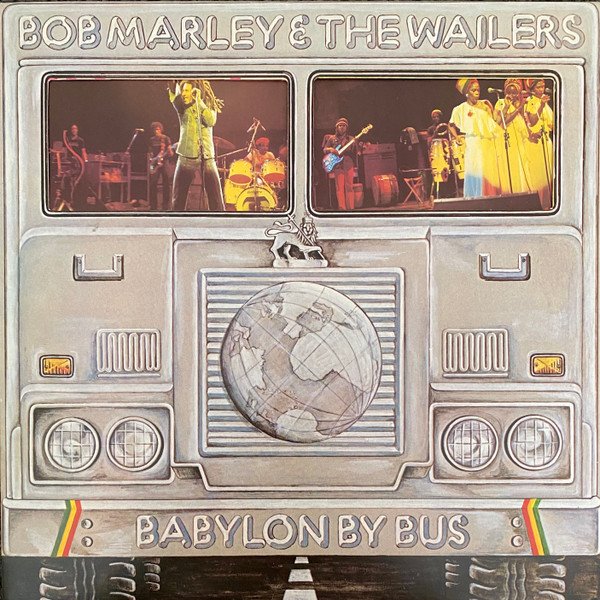
By the time Babylon By Bus hit the shelves in 1978, Bob Marley & The Wailers were already global icons, carrying reggae from the streets of Kingston to the farthest corners of the earth. This live album, recorded during their Kaya tour, captures the sheer electricity of their performances, particularly in Paris and other stops across Europe. At this point, Marley was more than just a musician—he was a revolutionary figure, a prophet of peace, justice, and resistance, who was . The tour itself reflected this duality. On one hand, it celebrated the band’s success, having become one of the most sought-after live acts on the planet. On the other, it unfolded against a backdrop of political unrest in Jamaica, where Marley had survived an assassination attempt just two years prior. The Wailers weren’t just entertaining; they were delivering a message, and Babylon By Bus is the undeniable proof of that mission.
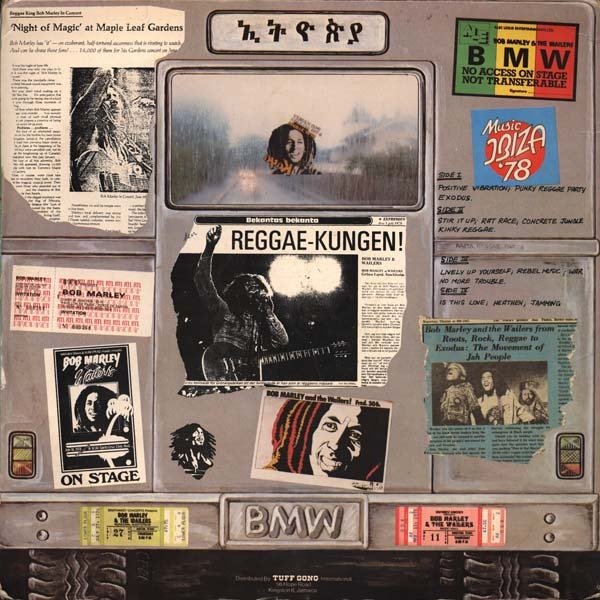
The recording process wasn’t without its struggles. Capturing a live performance at the level of clarity needed for an album was a serious challenge in the late ’70s, and Marley’s sound engineers worked tirelessly to bring out the band’s layered instrumentation while keeping the rawness intact. There were also logistical nightmares—long travel days, unpredictable crowd energy, and the occasional technical hiccup. And, above of that, of course, there was the unrelenting energy of the Wailers themselves—Aston “Family Man” Barrett’s hypnotic basslines, Carlton Barrett’s tight drumming, Junior Marvin’s searing guitar solos, and the ethereal harmonies of the I-Threes. Every night was a battle to deliver perfection, and on Babylon By Bus, you hear them win that battle over and over again.
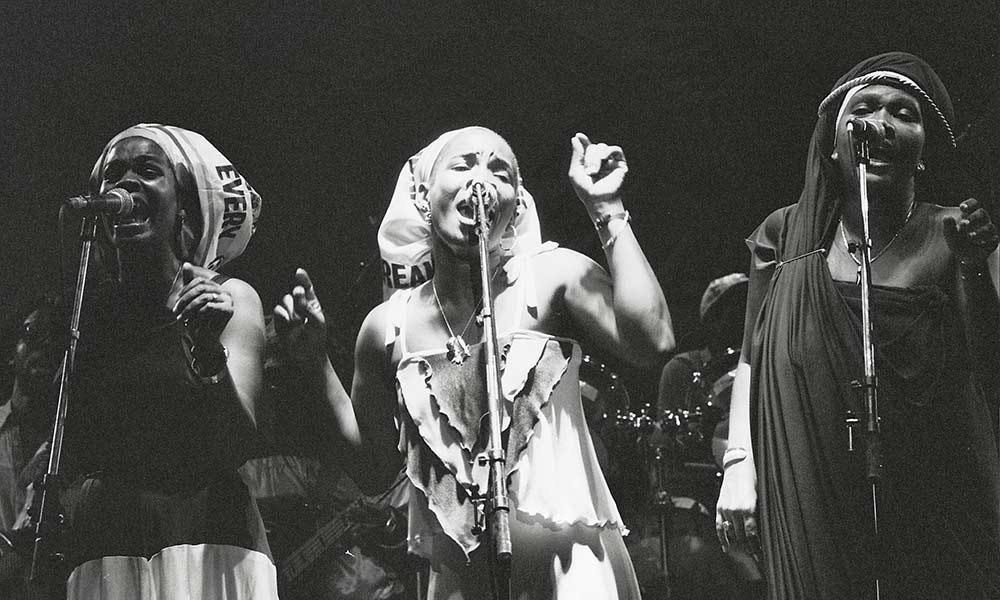
The album opens with “Positive Vibration,” a track that immediately sets the tone with its infectious groove and uplifting message, defining Marley’s ability to take his audience on a journey, making them feel every word and every note. “Exodus,” a song already massive in the studio version, turns into a sprawling, hypnotic anthem, stretching beyond 10 minutes, with the band locking into a trance-like groove that refuses to let go. “War / No More Trouble” is another standout, transforming Haile Selassie’s words into a fiery call to arms, demanding justice with an intensity that still resonates today.
Among other standout tracks, “Rat Race”, is an unfiltered political charge, where Marley spits fire against oppression and corruption, proving that reggae is not just a sound—it’s a weapon. Then there’s “Concrete Jungle,” a rare live performance of one of the Wailers’ earliest classics. The song’s haunting atmosphere remains intact, but here, it carries a different weight—more defiance, more urgency, as if Marley is reliving the struggles of his youth right there on stage. “Punky Reggae Party” is another must-hear, an all-out jam session where reggae and punk collide in an ecstatic rebellion.
And then there’s “Is This Love,” where the sheer warmth of Marley’s voice fills every inch of the venue, turning the song into a gospel of devotion and sincerity. “Stir It Up” delivers a sensual groove, stretching the song into a slow-burning masterpiece that showcases the Wailers’ unmatched ability to keep a rhythm alive and breathing. Finally, the album ends with “Jamming”, is pure celebration, an explosion of joy and unity that had entire stadiums moving as one. It’s the sound of Marley at his most radiant, urging the crowd to forget their worries and embrace the rhythm.
Why should you listen to Babylon By Bus? First, because it’s one of the best live reggae albums ever recorded, capturing Marley and his band at the peak of their powers. Second, because it transports you straight to the energy of a late ‘70s Marley concert, where every song was a sermon, and every beat carried a deeper meaning. Third, because it showcases the Wailers as one of the tightest, most dynamic bands in music history, elevating reggae to a level of sophistication and raw power rarely seen. And fourth, because Babylon By Bus is not just an album—it’s a historical document, a snapshot of a moment when reggae was changing the world, one song at a time.
To listen to Babylon By Bus is to step into a time when music still had the power to shake governments, ignite revolutions, and bring people together across all divides. This album is not just about sound—it’s about spirit. It’s about Bob Marley standing in front of thousands, his dreadlocks drenched in sweat, his voice a beacon of hope in a world that desperately needed it. It’s about the power of music to heal, to unite, to resist. So put the record on, close your eyes, and let Bob and the Wailers take you on the ride of a lifetime—because Babylon is still here, but so is the music.
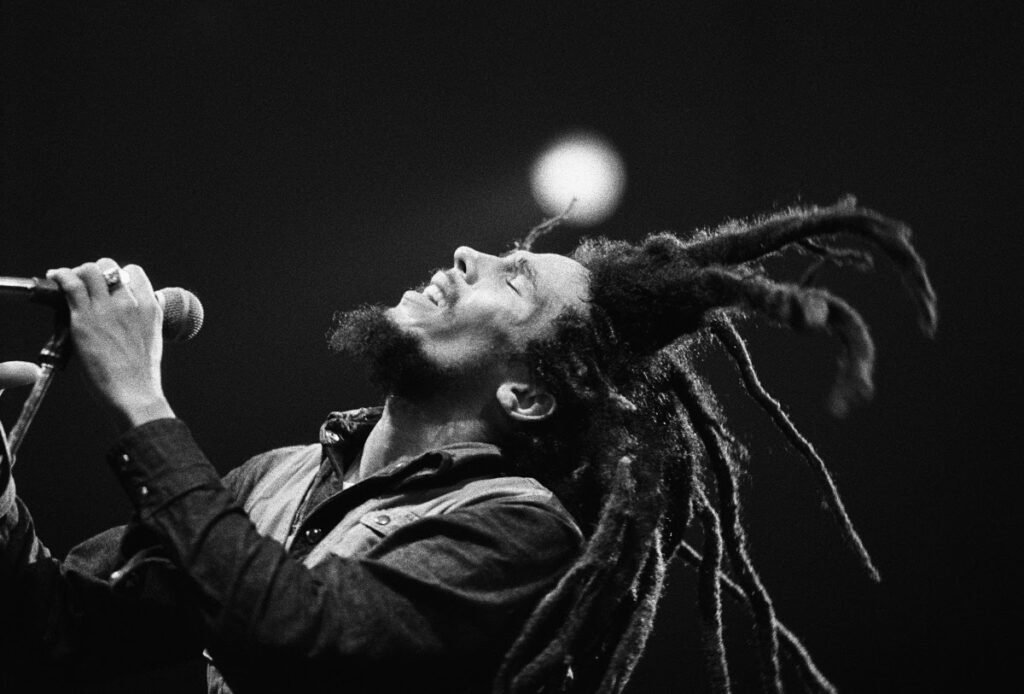
Full tracklist:
1. Positive Vibration
2. Punky Reggae Party
3. Exodus
4. Stir It Up
5. Rat Race
6. Concrete Jungle
7. Kinky Reggae
8. Lively Up Yourself
9. Rebel Music (3 O’Clock Roadblock)
10. War / No More Trouble
11. Is This Love
12. Heathen
13. Jamming
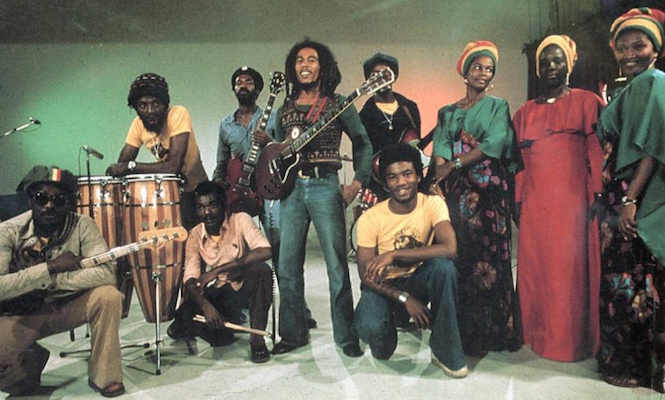
Bob Marley & The Wailers – Kaya Tour (1978) Lineup
Lead Vocals & Rhythm Guitar:
• Bob Marley – Lead vocals, rhythm guitar
Backing Vocals (I-Threes):
• Rita Marley – Backing vocals
• Judy Mowatt – Backing vocals
• Marcia Griffiths – Backing vocals
Guitarists:
• Junior Marvin – Lead guitar, backing vocals
• Al Anderson – Lead guitar (on select dates)
Keyboardists:
• Tyrone Downie – Keyboards, synthesiser, backing vocals
• Earl “Wire” Lindo – Organ, keyboards
Bass Guitar:
• Aston “Family Man” Barrett – Bass guitar, musical director
Drums & Percussion:
• Carlton “Carly” Barrett – Drums, percussion
• Alvin “Seeco” Patterson – Percussion
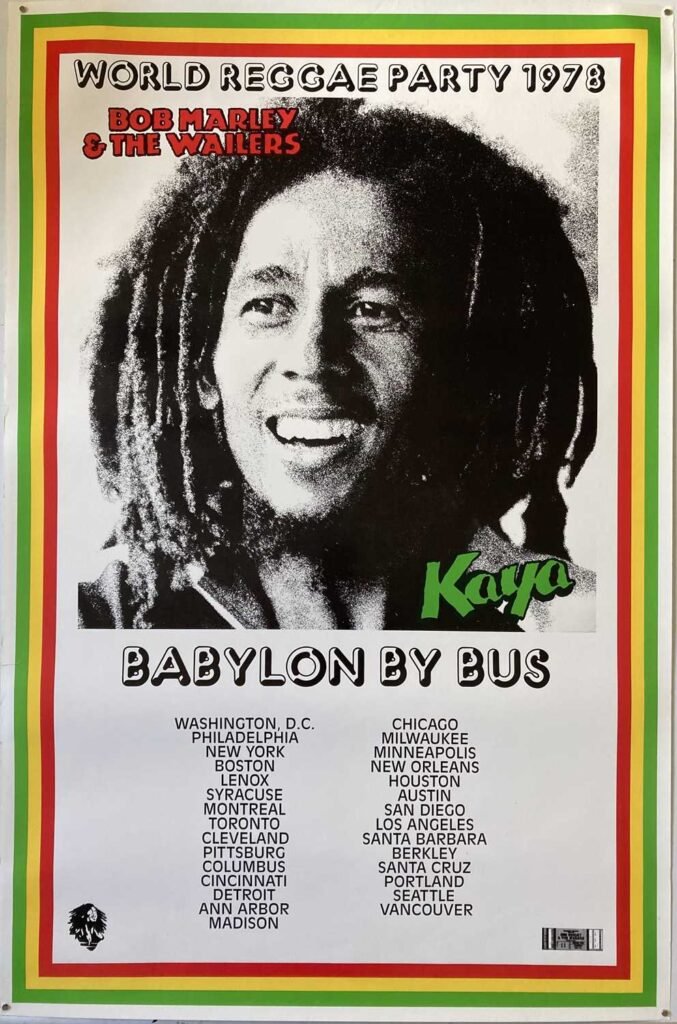
Tour Dates and Cities:
United States Leg 1:
• May 18: Hill Auditorium, Ann Arbor, Michigan
• May 19: Music Hall, Cleveland, Ohio
• May 24: Veterans Memorial Hall, Columbus, Ohio
• May 25: Orpheum Theater, Madison, Wisconsin (Early and Late Shows)
• May 27: Uptown Theater, Chicago, Illinois
• May 29: Performing Arts Center, Milwaukee, Wisconsin (Early and Late Shows)
• May 30: Northrup Auditorium, Minneapolis, Minnesota
European Leg:
• June 1-4: Rainbow Theatre, London, England
• June 6: Pavillon de Paris, Paris, France
• June 7: Vorst Nationaal, Brussels, Belgium
• June 9: Gröna Lund, Stockholm, Sweden
• June 10: K.B. Hallen, Copenhagen, Denmark
• June 11: Ekeberghallen, Oslo, Norway
• June 13: Westfalenhalle, Dortmund, Germany
• June 14: Philipshalle, Düsseldorf, Germany
• June 16: Pavillon Baltard, Paris, France
United States Leg 2:
• June 21: Madison Square Garden, New York City, New York
• June 23: The Spectrum, Philadelphia, Pennsylvania
• June 24: Civic Center, Springfield, Massachusetts
• June 25: Music Hall, Boston, Massachusetts
• June 28: Masonic Temple, Detroit, Michigan
• June 30: Auditorium Theatre, Chicago, Illinois
• July 1: Civic Center, St. Paul, Minnesota
• July 3: Red Rocks Amphitheatre, Morrison, Colorado
• July 5: Greek Theatre, Los Angeles, California
• July 7: Paramount Theatre, Seattle, Washington
• July 8: Pacific Coliseum, Vancouver, Canada
• July 11: Oakland Coliseum, Oakland, California
• July 13: Greek Theatre, Berkeley, California
• July 15: County Bowl, Santa Barbara, California
• July 16: San Diego Sports Arena, San Diego, California
• July 18: Civic Auditorium, Albuquerque, New Mexico
• July 20: The Summit, Houston, Texas
• July 21: Municipal Auditorium, New Orleans, Louisiana
• July 23: Paramount Theatre, Seattle, Washington
• July 29: Greek Theatre, Berkeley, California
• July 31: Starlight Bowl, Burbank, California
• August 5: Miami, Florida
